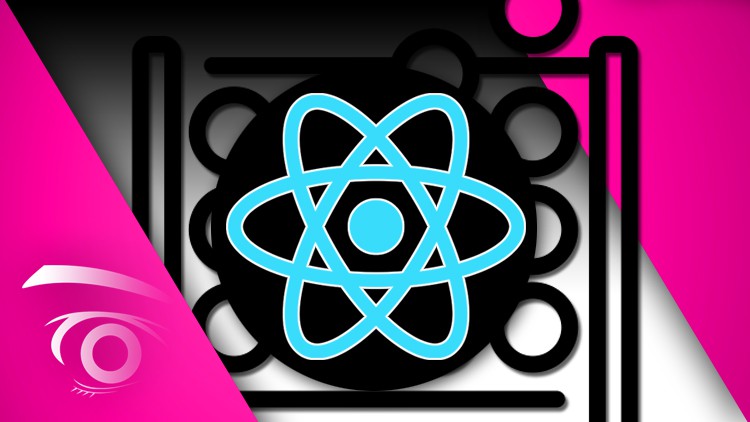
Learn the Foundations of React and JavaScript by Building a Fully Functional Connect-4 Game Clone.
What you’ll learn
-
Introduction to the Document Object Model (DOM)
-
DOM Manipulation
-
JavaScript Foundations
-
JavaScript Arithmetic Operators, Data Types, Arrays, Loops, Events
-
JavaScript Variables, Operator Precedence, Objects, Functions
-
Foundations of ReactJS
-
The Tools Needed to work with React
-
Passing Props, Destructing, React Children, OnClick Events, Styling
-
React Key Property, Handing Callbacks
-
AI Integration for Single Player Games
-
Conditional Rendering & LifeCycle Events
-
Building the Connect-4 Gameboard
This course includes:
5.5 hours of video
Certificate of completion
Course content
-
Preview03:12
-
DOM Manipulation
01:17
What you’ll learn
-
Introduction to the Document Object Model (DOM)
-
DOM Manipulation
-
JavaScript Foundations
-
JavaScript Arithmetic Operators, Data Types, Arrays, Loops, Events
-
JavaScript Variables, Operator Precedence, Objects, Functions
-
Foundations of ReactJS
-
The Tools Needed to work with React
-
Passing Props, Destructing, React Children, OnClick Events, Styling
-
React Key Property, Handing Callbacks
-
AI Integration for Single Player Games
-
Conditional Rendering & LifeCycle Events
-
Building the Connect-4 Gameboard
Description
If you had a passion for games growing up, you’re likely no stranger to connect-4 – a wildly popular game with the objective of connecting four single colored disks into a grid-like holder before your opponent. With this course you have the opportunity to relive this fond childhood memory by building a connect-4 clone using React.
React, also known as React JS, is a powerful JavaScript library used for building custom, interactive user interfaces using UI components. Some of the most well known examples of organizations using React for their front-end include Netflix, Facebook, and Airbnb. Developed and maintained by Meta along with a community of independent developers, React remains free and open-source. React is a component based library built entirely on JavaScript, which makes it perfect for designing complex UI’s. With React, developers can build encapsulated components that efficiently manage their own state and render UI updates specifically when data changes. For example, think of the automated content refresh feature you see on a twitter feed, or Facebook like button. Here the state of the UI component changes on the page, without having to manually refresh when the data is updated. This is just one small, yet powerful feature of React.
Through a complete hands-on project, this course will teach you all the fundamental principles of React that you must know to become a proficient React developer. We start with the tools needed to get started with React, along with instructions on creating the Connect-4 game board. From there we dive in to React OnClick Events, Passing Props, Destructing, React Children, and Passing Arguments. With a solid understanding of the foundations, students move on to various styling techniques for the game components, along with Dynamic classes, and handling callbacks. Here we’ll explore inline, global, and dynamic styling coupled with dynamic classes. We will then move on to the React State Hook, React Key Property and initializing the game modules. Students then tackle more intermediate concepts including the logical components of calculating a winner, determining a draw, and React Lifecycle events. In the last module, we explore the implementation of AI for automated move suggestions, and single player games.
In addition to the hands-on React module, we also offer a comprehensive overview of JavaScript for those who need a refresher. Here we start with introducing students to the document object model (DOM) which defines the logical structure of HTML documents. From there we dive into JavaScript to demonstrate various methods in which DOM elements can be manipulated to add interactivity to static components. We start right from the basics, which includes JavaScript placement, and data output. From there we move on to variable declaration, arithmetic operations, operator precedence, data types, and objects. Once the foundations are covered, we move on to more complex operations using Arrays, Conditional Statements, JavaScript comparison operators, Booleans and loops. Here students will learn to unleash the true power of JavaScript to render different outcomes based on user interaction. We will explore the use of functions to efficiently handle repetitive tasks and JavaScript events to handle output based on actions and occurrences. The section will conclude with a hands-on project where students will implement their knowledge to build a web based photo gallery and background color changer.
Who this course is for:
- Students interested in learning how to build interactive web pages using JavaScript
- Students interested in learning ReactJS
- Students interested in front-end UI Development using React
- Students interested in learning JavaScript Foundations